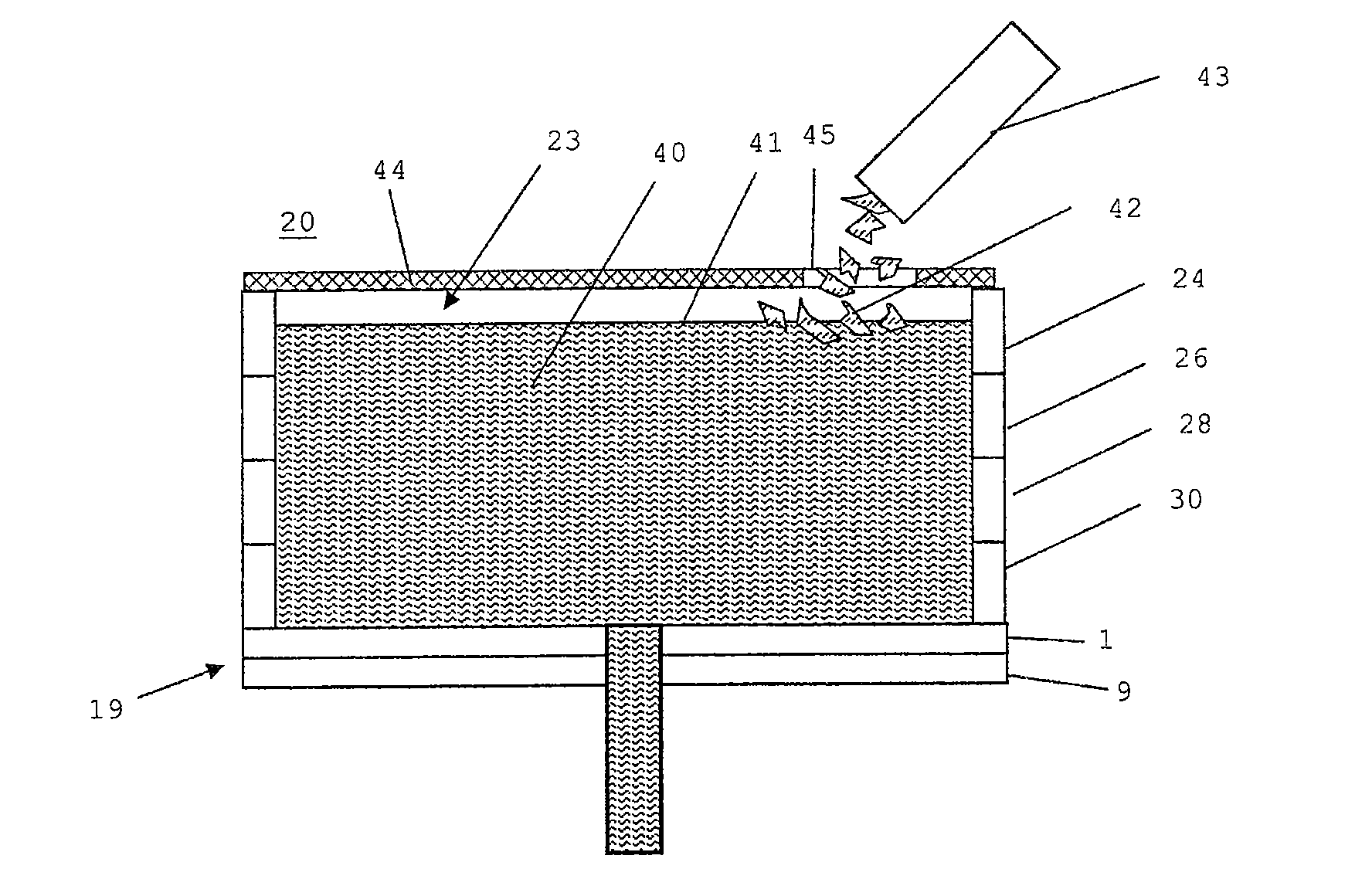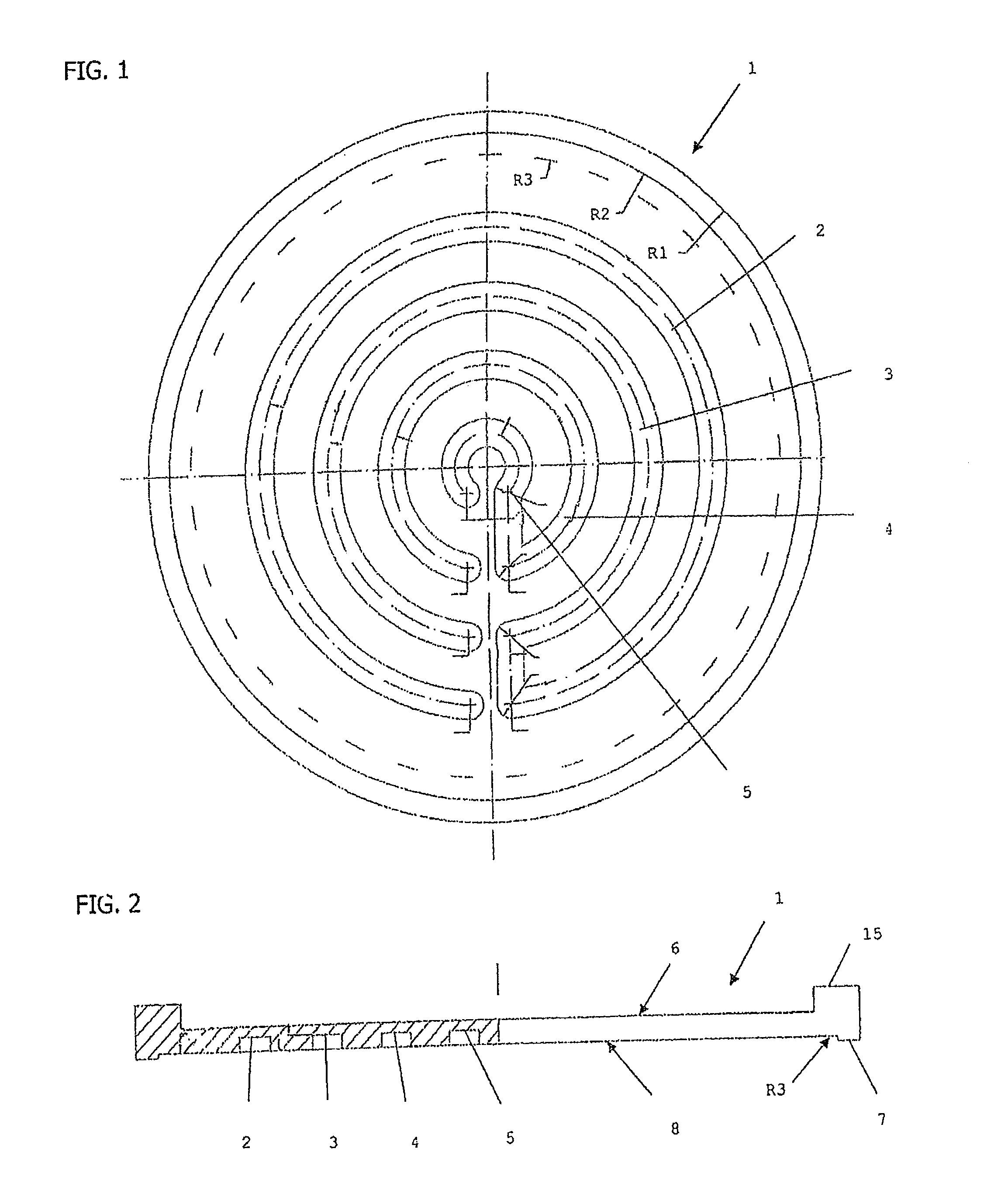Method and device for the continuous melting or refining of melts
a technology of melts and refining methods, applied in the direction of furnace components, lighting and heating apparatus, furnace types, etc., can solve the problems of high-purity glasses glass melts, premature end of production, wear of equipment, etc., and achieve the effects of low energy loss, lack of leakage protection, and lack of flashover resistan
- Summary
- Abstract
- Description
- Claims
- Application Information
AI Technical Summary
Benefits of technology
Problems solved by technology
Method used
Image
Examples
Embodiment Construction
[0089]Devices for the discontinuous production of glass products from a glass melt, which are also referred to as skull crucibles, may be taken, for example, from the German Patent Application DE 10 2006 004 637.4 with the title “Inductively Heatable Skull Crucible,” the contents of which are assumed to be known in the following description. Consequently, because it is known to the skilled practitioner in this field and also for reasons of clarity, an unnecessary description of additional device and method parts that are already known from this publication will be dispensed with below.
[0090]The inductor crucible 20 (FIG. 5) is conventionally fabricated from copper or from aluminum.
[0091]However, it can also consist of other materials, such as, for example, a Ni-based alloy, and may optionally be coated with Teflon or another material.
[0092]The inductor crucible is furnished with a protective layer 21, as described in more detail below, on the side (interior side) facing the charging...
PUM
| Property | Measurement | Unit |
|---|---|---|
| temperature | aaaaa | aaaaa |
| electrical conductivity | aaaaa | aaaaa |
| frequency | aaaaa | aaaaa |
Abstract
Description
Claims
Application Information
 Login to View More
Login to View More - R&D
- Intellectual Property
- Life Sciences
- Materials
- Tech Scout
- Unparalleled Data Quality
- Higher Quality Content
- 60% Fewer Hallucinations
Browse by: Latest US Patents, China's latest patents, Technical Efficacy Thesaurus, Application Domain, Technology Topic, Popular Technical Reports.
© 2025 PatSnap. All rights reserved.Legal|Privacy policy|Modern Slavery Act Transparency Statement|Sitemap|About US| Contact US: help@patsnap.com



